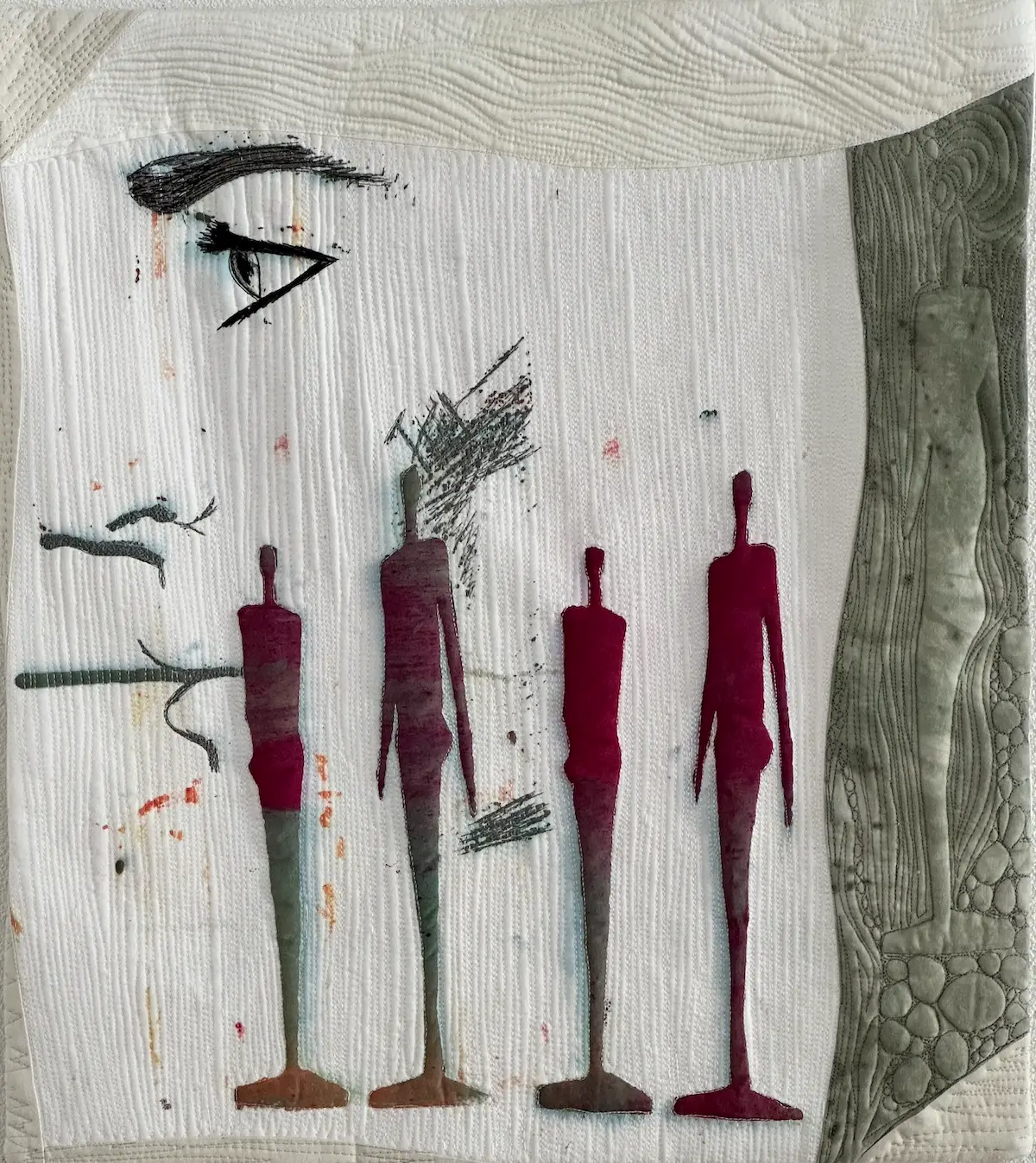Swiss textile artist Regula Affolter has spent decades turning fabric into layered stories, blending printing, stitching, and dyeing into her unique visual language. From reusing family heirloom linens to founding Switzerland’s Artquiltgalerie, she’s dedicated her life to elevating textiles as an art form.
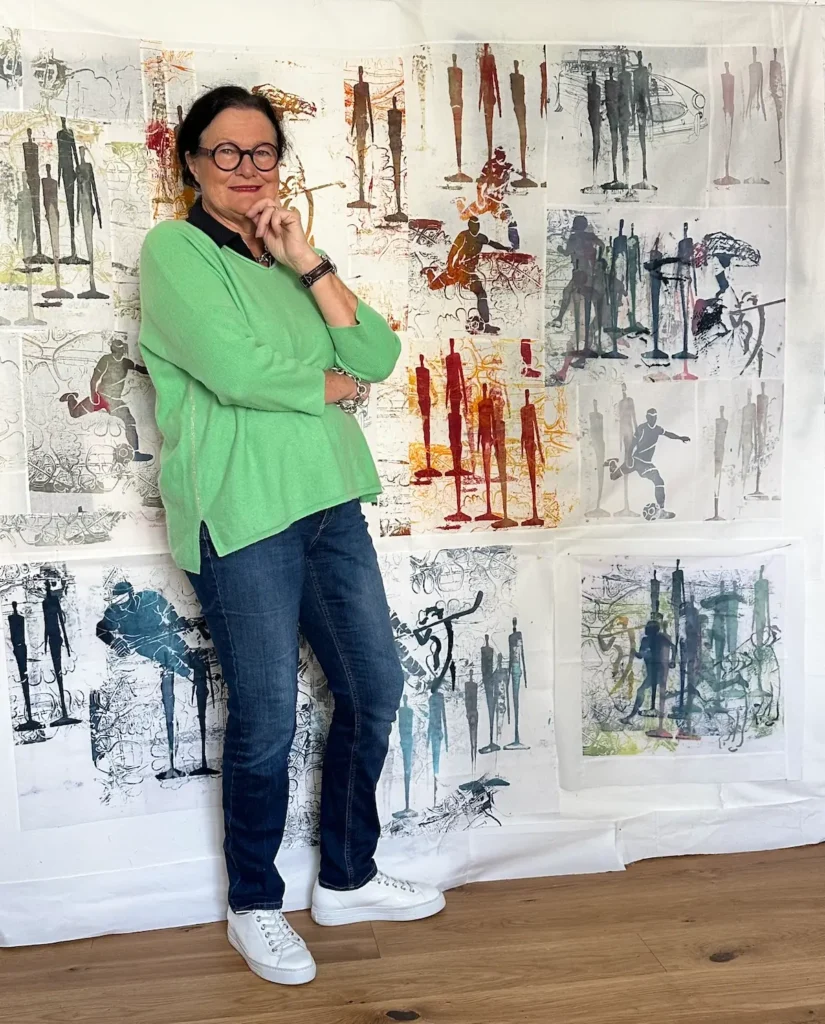
What first drew you to fabric as your artistic language?
I love working with textile fibers!
At first, I recycled old textiles and embellished them with embroidery, including everyday items such as pillows, towels, covers, baby blankets, and children’s clothing.
I designed batik illustrations for children’s books using fabric and produced sewn pieces for educational purposes.
As an Amazon Associate I earn from qualifying purchases. Read more about our affiliate linking policy.
I’ve always wanted to reuse my ancestors’ cotton, linen, embroidery, and other materials.
Swiss cross-stitch patterns have a rich history, and I am fascinated by traditional costumes and their stories, like The Berner Tracht, a conventional Swiss costume.
While I accompanied my husband abroad for business reasons from 1982 to 1984, I collected batiks and woven fabrics from the Igbo tribes in Nigeria, known as Akwete blankets.
In 1989, an exhibition of Amish quilts from the Esprit Collection of San Francisco was in Konstanz, Germany, organized by Ginie Curtze and curated by Julie Silber. This exhibition was shown in Europe for the first time, giving us the opportunity to admire these quilts of the Amish People. I was thrilled and also won the door prize.
From then on, I developed an interest in traditional quilt patterns and their historical background, and subsequently enrolled in a patchwork sampler course.
Artists such as Nancy Crow, Ann Johnston, Pat Kyser and Jan Myers Newbury influenced my mark making and linked me to the global textile art community.
In 2003, armed with advice from my Quilting Friends I had my first Solo Exhibition. The organisation and logistics for workshops by international artists, organized mainly for Nancy Crow’s first workshops in Switzerland, introduced me to many other artists and were a great opportunity and challenge.
In 2008 I founded the Artquiltgalerie in Switzerland to promote textile art, giving textile artists a space to exhibit their work as art.
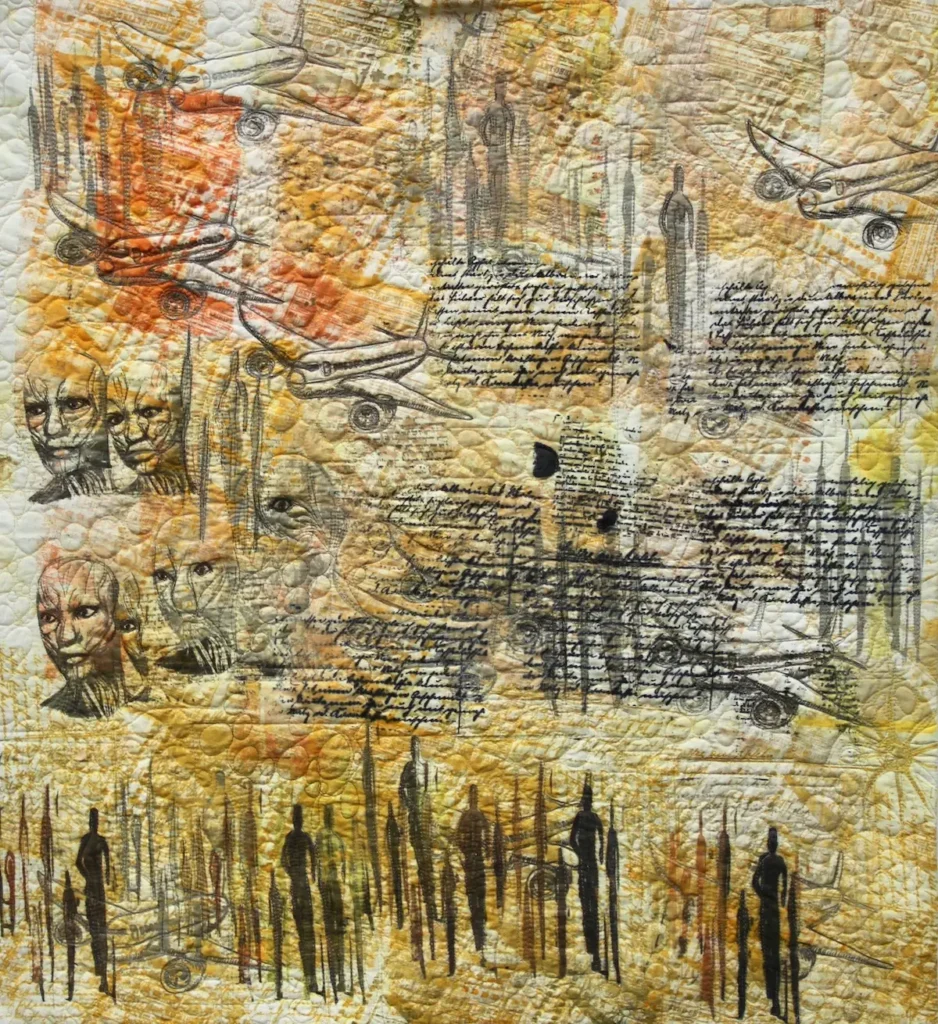
Did you have a moment when you realized textiles were more than just “craft” for you, but art?
Not really, I never intended to become an artist.
At first, I designed fabric books and small souvenirs for my children. These “Stitch Stories” were very popular, and I also made some for friends of ours. These textile pictures have always told a story, initially through colors, shapes, and materials. I simply put my ideas into practice. Later, I added figurative elements and supplemented the message with personal interpretations by applying quilting and embroidery techniques after printing.
Both historical and current art research inspired me to use textiles as a medium, as seen in the Blue Brain, the Missis Braini, the Interpretations and the Radiations series.
My series “Extras” is essentially based on interpretations and emphasizes active and pictorial contemporary components of our century.
It documents images from everyday life and can therefore evoke both humorous and thoughtful impressions.
The images show facts—events, pictures, or humorous stories—always from the viewer’s perspective.
However, I never work in a political context.

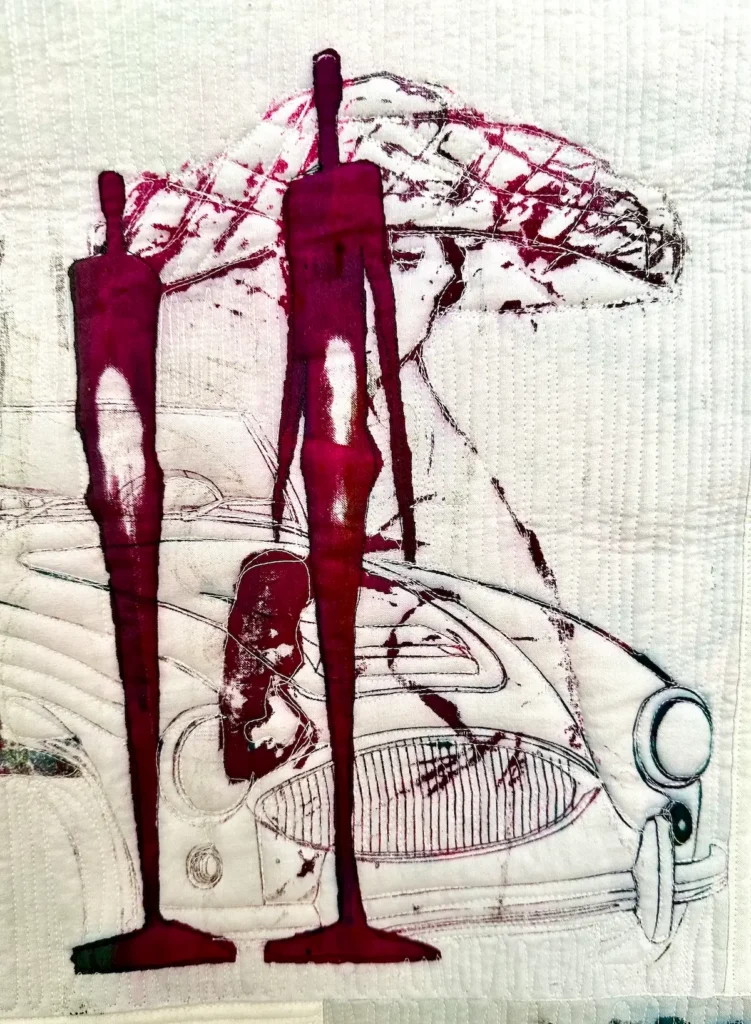
What was it about screen printing and dyeing that pulled you in?
Printing my own ideas of the designed images and integrating them into my work was the ideal way to go. I was able to realize my mark with my colors and to print on my own textile material.
I was fundamentally inspired by the Swiss sculptor Alberto Giacometti and designed a figure for printing that works very well for my anonymous people.
I also love working with the exposure of the draft to prepare the design for the film, mixing colors, and working with screens and squeegees.
Dyeing and printing with cold water reactive dyes always produces different results and is sometimes a bit of an adventure for me.

How does living in Switzerland — its landscapes, culture, or social settings — seep into your quilts?
I feel at home in the mountains and hills of our country and am a bit of a patriot.
Topics of this kind are easy to incorporate. Switzerland’s unique multilingualism, democratic values, and economic successes shape and unite us as Swiss citizens.
I respectfully refer to everyday life here and often use simple symbols for my characters to tell their stories.
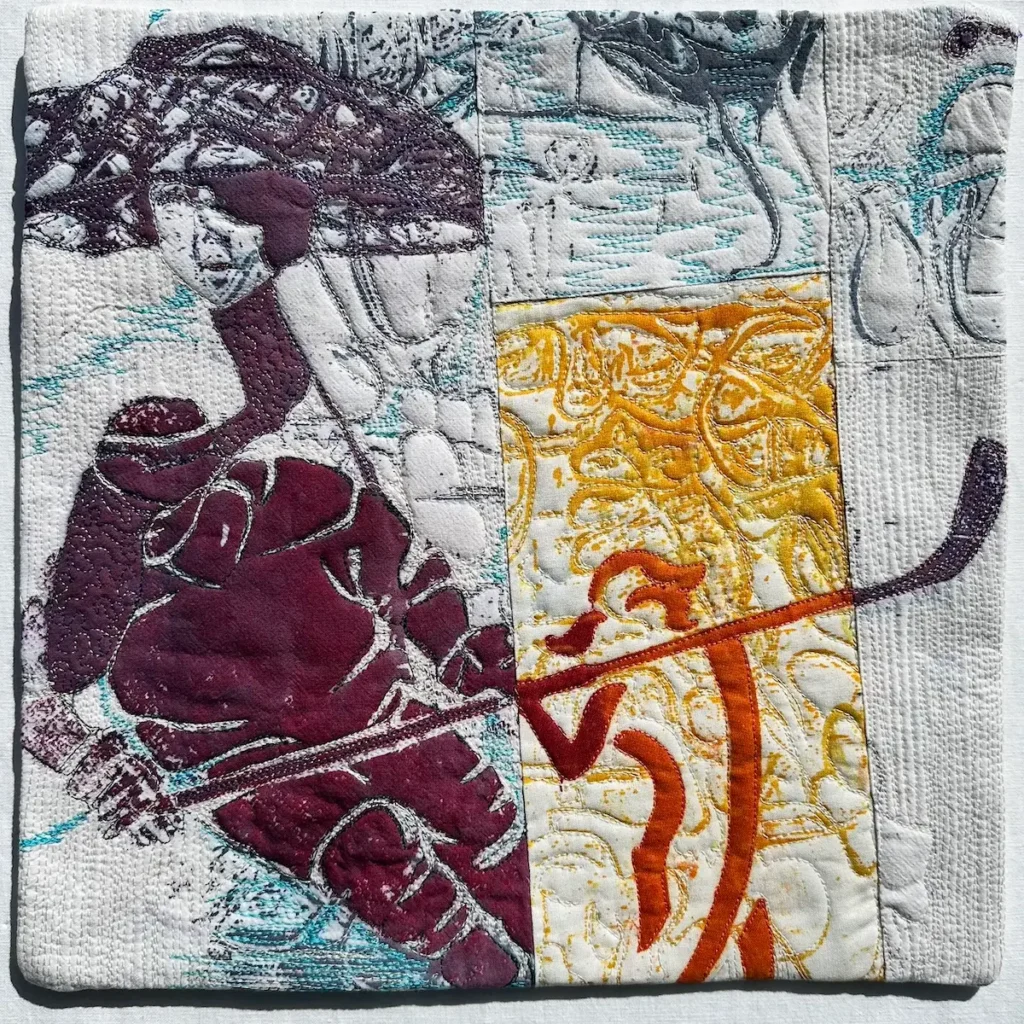
You worked in radiology for many years — how did that work find its way into your work?
For many years, I had a dual career as a radiology specialist and an artist. Sometimes I also incorporated anatomical themes into my quilts in visual form.
Difficult situations, life-saving measures, and processing the facts led me to respond to events with textile works.
I am intrigued by modern imaging technology and digital images, especially when they are thoughtfully used as art.

Describe your creative space.
I work in different rooms in our house. The sewing studio contains a computer with a printer, two sewing machines, several pin boards, multiple work tables, a bookcase, and an adjoining room equipped with a longarm quilting machine.
These two rooms are on the second floor of our house.
The screen printing studio is in our basement, next to the laundry room.
What does a typical day in the studio look like to you?
My working day usually starts in the morning, and I often work on several projects in succession over some weeks. Working days may can range from 12 to 16 hours, depending on the requirements of the dyeing process and the challenge of the design decisions.
I divide my working time into dyeing days and sewing days.
The design and layering process can take hours or even days, but the sewing process is often completed more quickly once the final decisions is made.

Do you work on several quilts at once or finish one before starting the next?
Yes, several pieces are often worked out and simultaneously, with quilting and finishing completed consecutively.
How do you move from a drawing or idea to a screenprint on cloth?
Using image editing software on my computer, I convert the chosen digital photo with color gradients into a black-and-white dot graphic. I then use this file to expose the microfilm. Then I apply the selected and developed motif to the screen fabric coated with light-sensitive emulsion.
Once the screen has been exposed, cleaned, and is ready for printing, the selected colours will be applied to the screen. I’m pulling them through the screen on the fabric with a squeegee.
After storing the printed fabric for 36 hours, I wash it, and iron the dried fabric.
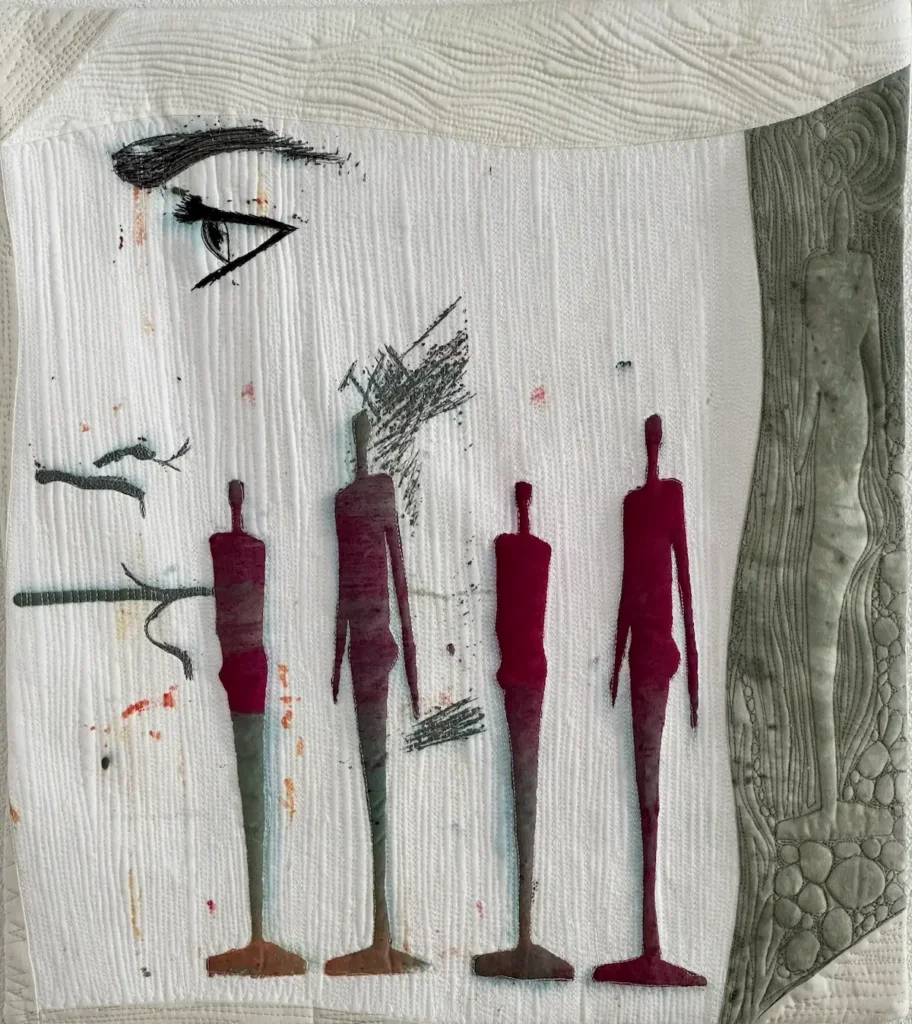
Your work mixes drawing, printing, and stitching — which step feels most like play?
There are several steps involved, which I really like!
When I have an interesting print that I couldn’t use, I build my next story on that design. I really enjoy that because I can create another story using the same basic elements.
But preparing a motif and turning an idea into a design is a part of my work that I particularly like.
Printing on fabric is challenging and requires my full concentration, but it’s also fun.
I also appreciate the structured workflow, which follows the intuitive creative process on the pinboard and ends with quilting on my sewing machines.
Overall, I appreciate the diverse work processes and enjoy free-motion quilting on my Q24 longarm machine.
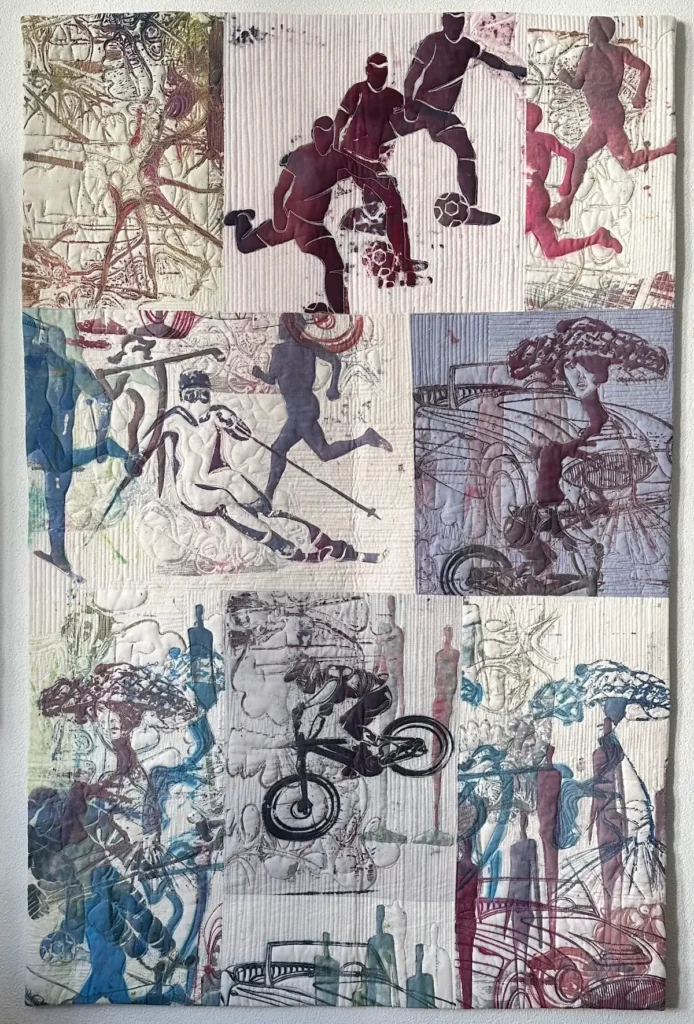
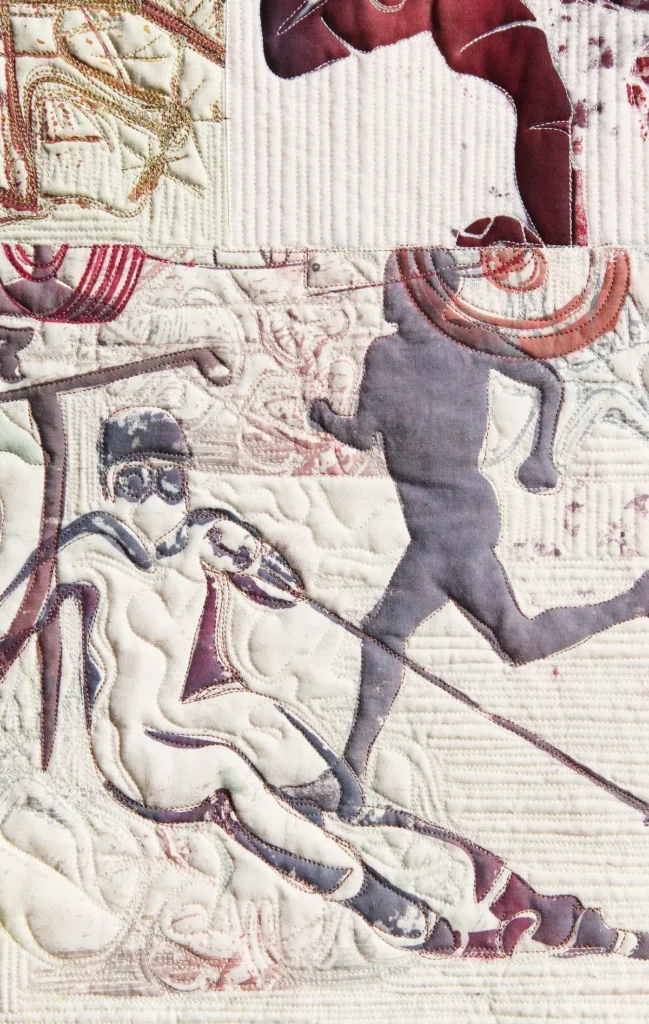
You often capture anonymous figures in public spaces — what fascinates you about these fleeting moments?
The goal is to bring attention to what is not immediately apparent, highlight irrational aspects, and examine outward behaviors without political judgment. This approach aims to present both positive and negative aspects, reduce the fast pace of modern life, and encourage openness.
Sometimes I wonder what people expect from their existence and try to interpret these standards in my works and stories. I then try to do this in a humorous way.

How do you plan a series (like “Blue Brain” or “Golfer”)? Do you plan or let it grow?
Ideas from my surroundings or life events are captured spontaneously—not planned. I develop a theme through extended creative periods.
Humor shows up in some works, like the WEF parodies.
How do you use humor to sharpen your artistic voice?
The process begins with a conceptual image, which may include an initial sketch and an underlying idea. The intent to convey humour is not always evident from the start. My interpretation establishes the message within the composition of images and figures, after which I develop a cohesive and potentially humorous statement.
Do you see your series as separate worlds, or do they connect with each other in a larger narrative?
The works parody aspects of sports, business, and lifestyles, depicting scenes that reflect common situations. A series may use multiple images to convey a narrative, while a single image can also communicate a story.
The stories often emerge during the creative process, whether during printing or later during the sewing process.
I work with many possibilities and printed pieces, then place them in the context of the story and put it all together.
Sometimes this results in several works.

How do you balance your personal vision with the expectations of galleries or shows?
I develop my artistic visions into images, subsequently seeking suitable gallery representation.
My figures are conceptually aligned with the thematic elements of the space rather than tailored to potential buyers or viewers.
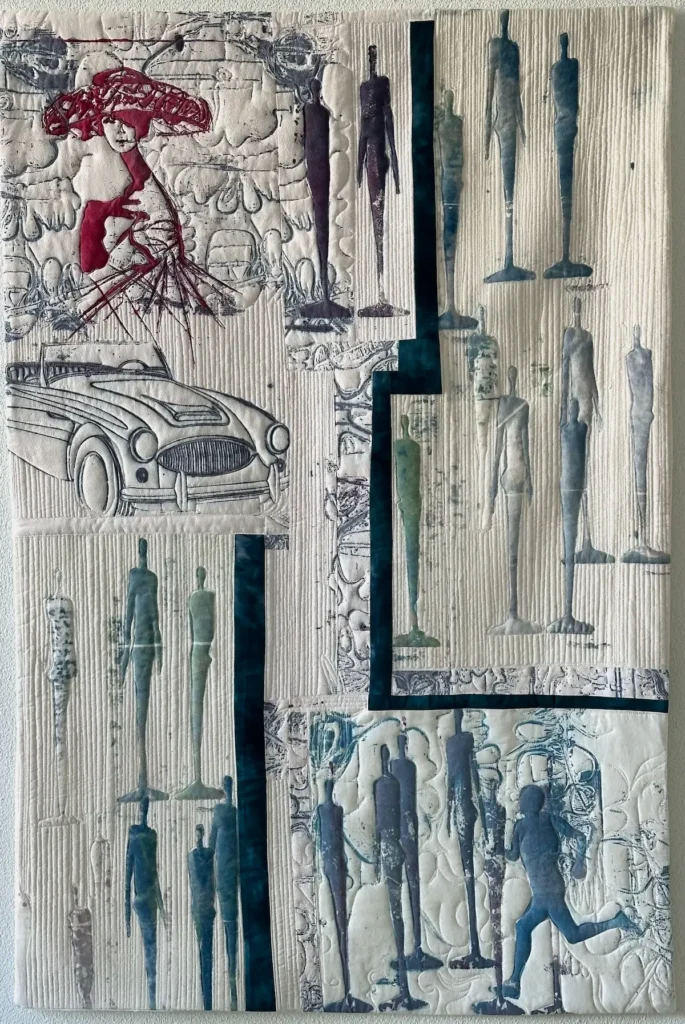
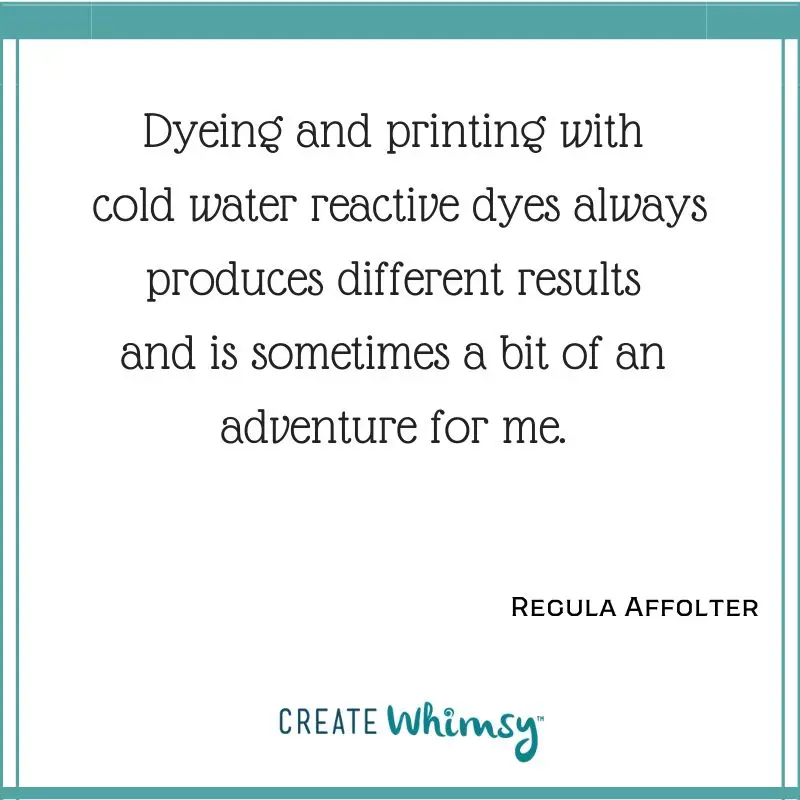
Looking back, what part of your journey as a maker surprised you the most?
In fact, it is the basis for writing and drafting several essays or interpretations—not to measure myself against other artists—or to be constantly motivated and find new inspiration.
Where can people see your work?
I am a Juried Artist member of SAQA. https://www.saqa.com/members/our-community/juried-artist-profiles
I have a piece in the current Exhibition of Quilt National 25.
On my website www.regaffolter.ch
Some of my works can be seen in museums, magazines, books, and catalogs.
Interview posted September 2025
Browse through more inspiring art quilts on Create Whimsy.

